ALL ABOUT RANUNCULUS
Ranunculus flowers look almost too perfect to be real. Their rose-like blossoms have tissue-thin petals and they come in colors that range from cream and pale yellow to apricot, pink, orange, red and burgundy. Though not often seen in home gardens, the exquisite flowers of ranunculus are a staple in high-end flower shops and wedding bouquets.
If you're a fan of ranunculus, why not try growing them yourself? The corms can be planted in containers or in the garden so you can enjoy these beautiful blooms both indoors and out. Shop our selection of ranunculus HERE.
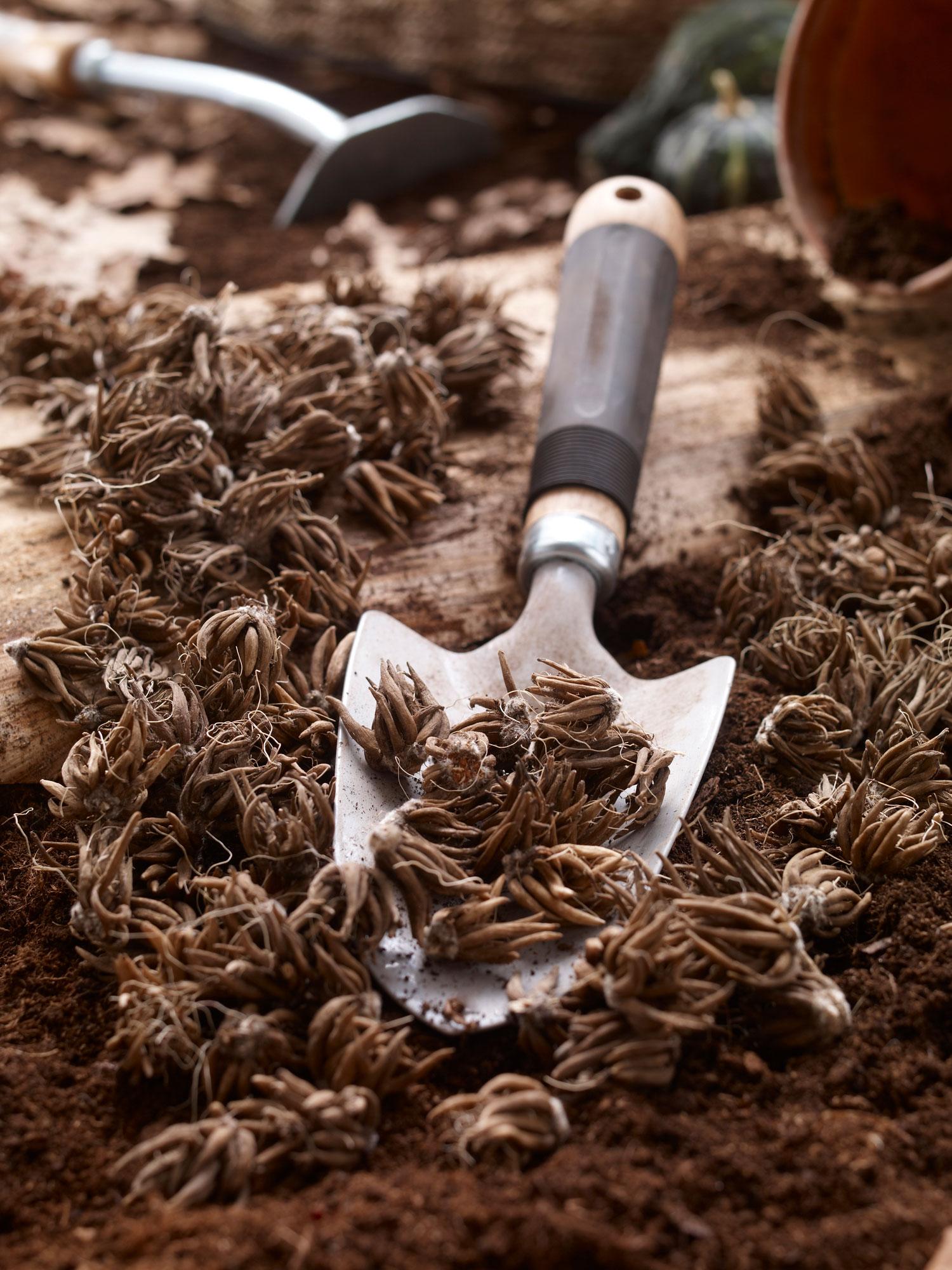
START WITH A QUALITY PLANT
Ranunculus grow from corms that resemble little claws. Large corms contain more stored food energy than small corms, and will give you a stronger plant with more flowers. Longfield Gardens supplies 6/7 cm ranunculus corms so you can enjoy the biggest, brightest blooms.
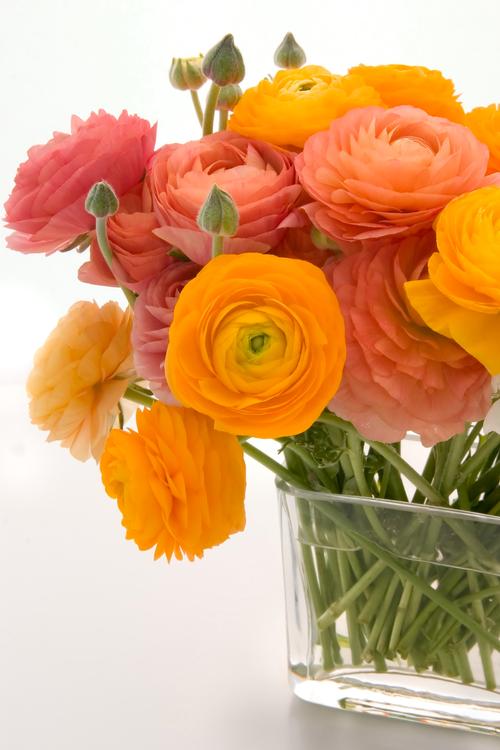
PLAN FOR SUCCESS
Sun and Shade: Ranunculus should be grown in full sun. The plants dislike heat and hot temperatures, but they need lots of bright light every day.
Hardiness Zone: Ranunculus are winter hardy in growing zones 8-10. Gardeners in these areas plant ranunculus corms in fall for spring flowers. In colder areas (zones 4-7) ranunculus will not survive the winter outdoors, but the corms may be planted in spring for late summer flowers. To find your growing zone click HERE.
Soil Conditions: For best results, plant the corms in light, well-drained soil. Avoid soil that stays wet as the corm and roots can rot. If you are growing ranunculus in containers, use a high quality, soil-less growing mix.
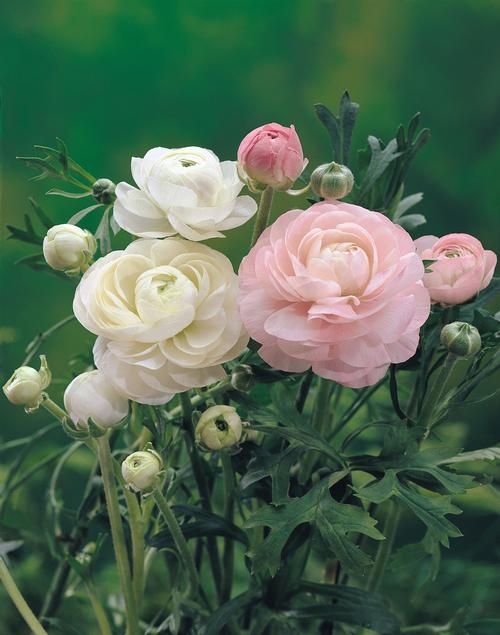
WHERE TO PLANT RANUNCULUS
Ranunculus are cool season flowers that grow best in spring-like temperatures of about 55°F. In warm climates (zones 8-10), the corms are planted in the fall so they bloom in late winter or early spring. Plant ranunculus in beds and borders, cutting gardens and containers. They are good companions for other spring flowers such as primroses, pansies and larkspur.
In climates where ranunculus are not winter hardy (zones 4-7), the corms are usually planted in spring for flowers in late summer. In these areas, the most reliable way to grow ranunculus is to plant them in containers rather than in the garden. This helps to ensure proper drainage, and once the plants come into bloom, it's easy to move them around so they get noticed.
Flower farmers and other commercial growers usually grow ranunculus in a greenhouse. Being able to control both high and low temperatures allows them to produce flawless blossoms for their wholesale customers. When ranunculus are grown under cover, the bulbs are typically planted in fall for flowers in late winter or early spring.
To learn more, read Cut Flower Favorites: Freesia and Ranunculus.
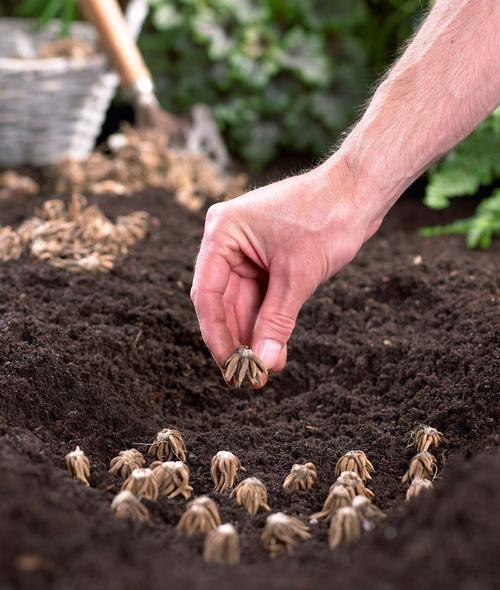
HOW TO PLANT RANUNCULUS
Depth and Spacing: Plant the corms 4” apart and 2” deep with the claw side down.
Planting Tips: When they are dormant, ranunculus corms are hard and dry. To help them get started more easily, you can soak the corms immediately before you plant them. Set them in a bowl of room-temperature water for 3-4 hours (no longer).
WHAT TO EXPECT
Ranunculus typically bloom about 90 days after planting. Once flowering begins, you can expect to get flowers for 4 to 6 weeks.
In good growing conditions, each ranunculus plant develops a large root ball. If you are growing ranunculus in pots, be sure to allow plenty of space for the roots so the plants can get reach their full potential.
For long-lasting bouquets, cut ranunculus flowers as soon as they begin to show color.
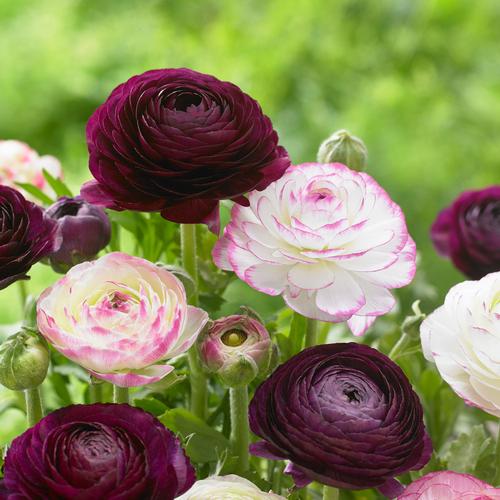
CARING FOR RANUNCULUS AFTER THEY BLOOM
Ranunculus are winter hardy in zones 8-10. To encourage the plants to come back a second year, make sure to plant them in very well drained soil. Keep in mind that these plants do not like hot weather. Cool coastal conditions are ideal.
In colder areas (zones 4-7) or where growing conditions are less than ideal, ranunculus are usually treated as annuals, with fresh bulbs planted each spring.
You may also be interested in reading: Cut Flower Favorites: Freesia and Ranunculus.


